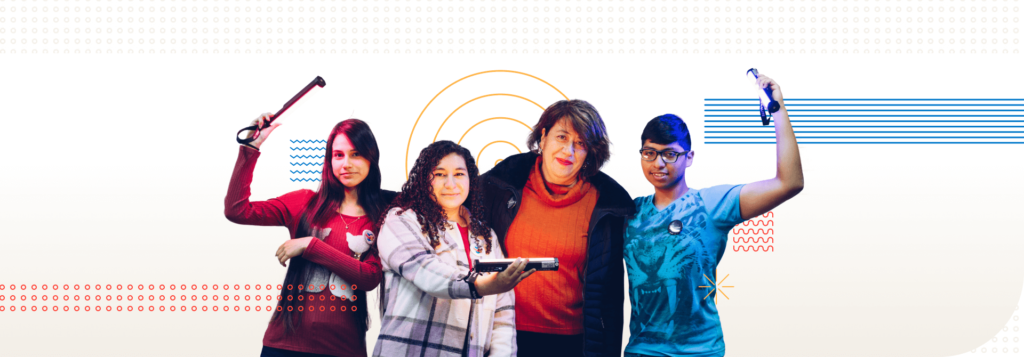Three students from Paraguay were concerned about the frequent power outages and decided to put environmental education in practice: they developed a smart waste container that converts organic waste into biogas, a clean and renewable energy source. This initiative, called “Smartbin,” won the 2024 Solve for Tomorrow in Paraguay, Argentina, and Uruguay.
While researching the country’s energy deficit, they reflected on the large amount of waste generated during school lunch. “Suddenly, there’s a lot of organic waste like banana peels. And they wondered: how can we turn this waste into biogas to power small appliances?”, recalls the mediator teacher, Leticia Cuevas. She is a systems engineer and the technology teacher at the school, where she leads the M.A.R. Tech Club (named after the school Miguel Ángel Rodríguez).
The club, created in 2022 to foster technology projects, brings together students from different scientific and technical courses. It was the birthplace of the “Smartbin” team. They are high school students in a scientific-technical track, which in Paraguay is the stage between basic and higher education. Two of the students had already developed the “Neolimb”, a finalist project in the previous Solve for Tomorrow edition, and were joined by the older sister of one of them.
“One crucial point we knew we had to consider was feasibility. We analyzed industrial-scale models and smaller ones until we arrived at our prototype,” Cuevas describes.
Projects like this give students the tools to create solutions in any context in the future. It sparks curiosity, Cuevas believes.
One of the students, Emilia, was in charge of the design, first doing it by hand and then using a digital tool. With that as a basis, the whole group assembled the structure. They had to work with the electronics, adding a scale to the bottom of the bottle that connects to an Arduino Omega 2560, an open-source microcontroller board that can be programmed to control electronic devices such as motors and sensors, and which in this project controls the load inside the prototype.
Turning lunch waste into cooking gas
The idea is the waste to enter through a funnel with a lid operated by a servomotor (a device designed for precise movement control), connected to the scale.
When the maximum weight is reached, a gate automatically closes, initiating the anaerobic digestion process. In other words, when the container is closed, it becomes oxygen-free (anaerobic environment), allowing a biological process to take place in which different microorganisms break down the organic matter inside.
This process produces biogas, with its weight and volume displayed on an LCD screen. Additionally, a sensor detects flammable gases, monitors biogas production in real-time, and triggers alerts to ensure safe storage.
After doing some calculations, they estimated that 3.8 kilograms of waste can generate 14 kilowatts of energy per day. That is enough to power a fan for 8 hours. The gas can also be used in stoves, heaters, ovens, or converted into fuel for electric generators.
While developing the project, the team visited another school with a large biodigester (without electronic automation). “We exchanged information. They gave us tips about safety, like how to use valves to control methane leaks,” says Cuevas.
The team carried out all the electronic tests, but due to time constraints, they scheduled the tests with school waste for 2025. Looking ahead, the teacher plans to further expand the technology of the environmental education project in practice. “We would like the data currently displayed on the LCD screen to be available in an online system so that any user can view it on their cell phone,” she envisions. The ultimate dream is to have a robust biodigester plant at the school.
Beyond environmental education in practice, the project fosters autonomy
By getting hands-on, students not only apply theoretical knowledge but also develop soft skills like independence. “During the mentoring sessions, not everyone could always participate. But those who joined later explained everything to the rest. They took a lot of responsibility in every step and were truly the protagonists,” Cuevas shares.
For teachers unfamiliar with Design Thinking, Cuevas recommends following every phase of the trail of projects, without skipping any of them, and allowing students the freedom to choose the topic and design their path. “Paying close attention to every detail in each phase of the project was our main differentiator this year,” she points out.




